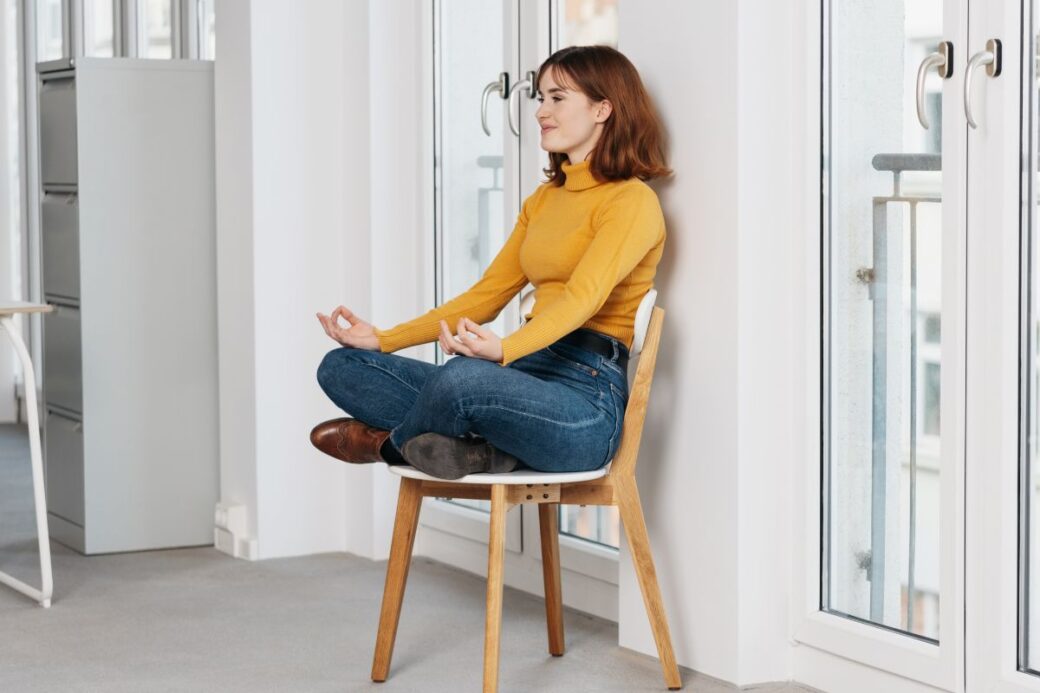Are you looking to improve your posture during meditation? Look no further! In this article, we will explore the importance of optimizing your meditation bench angle for maximum comfort and support. By making a simple adjustment to the angle of your bench, you can enhance your meditation experience and promote proper spinal alignment. Discover the key benefits of finding the perfect bench angle and unlock a new level of mindfulness.

Meditation Bench Angle: Understanding Meditation Bench Angles
Defining a Meditation Bench
A meditation bench is a specially designed tool that helps support proper posture during meditation. It typically consists of a flat surface and legs that provide stability. The purpose of a meditation bench is to create a comfortable and aligned sitting position, allowing practitioners to focus and deepen their meditation practice.
Importance of Bench Angles in Meditation
The angle of a meditation bench plays a crucial role in achieving a balanced and upright posture. Different bench angles can affect the alignment of the spine, pelvis, and hips, which directly impacts the overall comfort and effectiveness of meditation. Understanding and optimizing the bench angle is essential for maintaining proper posture and reaping the full benefits of meditation.
Examining the Standard Meditation Bench Angle
The standard meditation bench angle is around 15-20 degrees from the horizontal plane. This angle allows for a slightly forward tilt of the pelvis, which naturally curves the lower back inward and maintains the natural curve of the spine. It promotes an open and upright posture, creating a stable foundation for meditation. However, it’s important to remember that individual preferences and body types may require slight adjustments to the standard angle.
The Science of Perfecting Sitting Postures
Importance of Good Posture for Meditation
Good posture is vital for meditation because it supports the body in remaining alert and relaxed throughout the practice. When the spine is properly aligned, it allows for better breath control, reduces discomfort and distractions, and facilitates mental focus. Maintaining good posture also helps to prevent injury, as it evenly distributes the body’s weight and minimizes strain on the muscles and joints.
Biomechanics of Seated Posture
Seated posture, especially during meditation, involves a balance between stability and flexibility. The ideal posture aligns the three natural curves of the spine – the cervical, thoracic, and lumbar curves – and maintains the natural curves of the neck and lower back. This alignment minimizes undue stress on the spinal discs and ensures that the weight is evenly distributed, leading to a more comfortable and sustainable meditation practice.
Effects of Poor Posture on Meditation
Without proper posture, meditation can become challenging and uncomfortable. Poor posture can lead to excessive strain on the muscles and joints, resulting in pain or even injury during and after meditation sessions. It also hampers the flow of breath and energy throughout the body, making it difficult to relax and focus the mind. By neglecting proper posture, practitioners may miss out on the full benefits of meditation and hinder their progress.

Using a Meditation Bench for Optimized Posture
Benefits of Using a Meditation Bench
Using a meditation bench offers several advantages in terms of posture optimization. First and foremost, it provides a stable and elevated surface to sit on, which helps to align the spine and promote good posture. By alleviating pressure on the hips and knees, a bench allows for a more comfortable and sustained meditation practice. Additionally, a meditation bench can offer support to those with limited flexibility or injuries, enabling them to engage in meditation without discomfort.
Common Mistakes When Using a Meditation Bench
One common mistake when using a meditation bench is sitting too far back on the bench, which can cause the pelvis to tilt backward and disrupt the natural alignment of the spine. Another mistake is not using a cushion or padding between the bench and the knees to ensure proper support and prevent discomfort. It is also important to avoid slouching or rounding the shoulders, as this can create tension in the neck and upper back.
Achieving a Balanced Posture with a Meditation Bench
To achieve a balanced posture with a meditation bench, it’s important to place the bench at the appropriate distance from the body, allowing for a gentle forward tilt of the pelvis. The feet should be grounded firmly on the floor or a meditation mat, providing stability and support. The spine should remain straight, with the shoulders relaxed and the chin slightly tucked in. With a balanced posture, practitioners can experience a deep and focused meditation practice.
Meditation Bench Adjustments for Comfort
Adjusting Seat Height
Adjusting the seat height of a meditation bench is crucial for achieving optimal comfort and posture. The height should be set so that the knees are slightly lower than the hips when seated on the bench. This position ensures proper alignment of the pelvis and spine, reducing strain and promoting a balanced posture. It’s recommended to experiment with different seat heights to find the one that feels most comfortable and supportive for individual body proportions.
Adjusting Seat Angle
The angle of the seat on a meditation bench can be adjusted to accommodate personal preferences and body requirements. While the standard angle is around 15-20 degrees, some individuals may find that a slightly shallower or steeper angle works better for them. It’s essential to listen to the body and experiment with different angles to find the one that promotes the best alignment and comfort during meditation.
Adjusting Foot Position for Stability
The position of the feet during meditation is another important factor in optimizing comfort and stability. Whether sitting on the floor or using a meditation mat, ensure that the feet are firmly grounded and in a comfortable position. If sitting cross-legged, the knees should ideally be below the level of the hips, creating a stable base. Experimenting with the distance and angle of the feet can help find the most stable and supportive position.
Personalizing Bench Adjustments
Each individual’s body is unique, and it may be necessary to personalize the bench adjustments to suit specific needs. Some practitioners may require additional padding or cushions for added support and comfort. Others may benefit from minor modifications to the bench design itself. It’s important to listen to the body, seek expert advice if needed, and make personalized adjustments that promote optimal comfort and alignment.
Customizing The Angle of Your Meditation Bench
Starting Point for Bench Angle
The standard bench angle of 15-20 degrees can serve as a starting point for customizing the angle of your meditation bench. Begin with this angle and evaluate how it feels in terms of comfort and alignment. Pay attention to any areas of discomfort or strain, as these may indicate the need for slight adjustments to the angle.
How to Measure Meditation Bench Angle
To measure the angle of your meditation bench, you can use a protractor or a digital angle finder. Place the base of the protractor or angle finder on the seat of the bench and align the arm along the straight line of the bench’s surface. The angle measurement will indicate how steep or shallow the bench angle is. This measurement can serve as a reference point for future adjustments.
Modifying Bench Angle over Time
As you continue to practice meditation, it’s natural for your body’s needs and preferences to evolve. It may be necessary to modify the bench angle over time to ensure optimal comfort and alignment. Regularly assess your posture during meditation and pay attention to any changes or discomfort. If needed, make gradual adjustments to the bench angle to adapt to your body’s changing requirements.
Impact of Bench Angles on Spine Alignment
Anatomy of the Spine during Seated Meditation
When seated for meditation, the spine undergoes specific changes in alignment. The natural curves of the spine should be preserved, with the neck, upper back, and lower back maintaining their respective curves. The head should be aligned with the spine, and the shoulders should remain relaxed but not slouched. The alignment of the spine affects the flow of energy through the body and supports a deep and focused meditation practice.
Ideal Spine Alignment for Meditation
The ideal spine alignment for meditation is maintaining the natural curves of the spine while promoting an upright and relaxed posture. The cervical curve in the neck should be maintained, allowing the head to rest in a neutral position. The thoracic curve in the upper back should be slightly rounded forward, while the lumbar curve in the lower back should be gently curved inward. This alignment creates an open and spacious posture that supports deep relaxation and mental clarity.
Adapting Bench Angle for Spine Health
In some cases, individuals with specific spinal conditions or limitations may need to adapt the bench angle to accommodate their needs. For example, those with excessive lumbar lordosis, also known as swayback, may benefit from a slightly steeper bench angle to encourage proper alignment of the lower back. It is important to consult with a healthcare professional or experienced meditation coach if you have any concerns or specific spinal conditions.
Seeking Expert Help to Set Bench Angle
Health Professionals for Posture Check
If you are unsure about your posture or how to optimize your meditation bench angle, it can be beneficial to consult with health professionals such as physiotherapists, chiropractors, or osteopaths. These experts can assess your current posture, identify any imbalances or areas of concern, and provide guidance on setting the correct bench angle to support optimal spine alignment and overall posture.
Yoga and Meditation Coaches for Guidance
Yoga and meditation coaches are also excellent resources for obtaining guidance on setting the correct bench angle. These professionals have in-depth knowledge of yoga postures and meditation practices and can provide personalized advice based on your individual needs and goals. They can observe your posture, suggest modifications, and guide you through proper alignment techniques for an effective and comfortable meditation experience.
Online Resources and Tutorials for Bench Angle
For those unable to access in-person guidance, there are numerous online resources and tutorials available that can provide valuable information on bench angles for meditation. Websites, blogs, and video platforms often feature experienced meditation practitioners and instructors who share their insights and recommendations. However, it is essential to verify the credibility and expertise of the sources before adopting their advice.
Evaluating Your Posture with Different Bench Angles
Monitoring Postural Changes
Regularly monitoring your posture during meditation is crucial for identifying any changes or discomfort. Using different bench angles can help assess their impact on your posture and overall comfort. Pay attention to any shifts in alignment, areas of tension or discomfort, and changes in your ability to remain focused and relaxed. By actively observing your posture, you can make informed adjustments to optimize your meditation experience.
Understanding Body Feedback
Your body provides valuable feedback during meditation, indicating whether your posture is aligned and comfortable. Engage in body scanning techniques during your practice to bring awareness to areas of tension, discomfort, or misalignment. Listen to your body’s signals, such as pain or fatigue, as they may indicate the need for adjustments to your bench angle. Trusting and heeding your body’s feedback is essential for finding the optimal posture for your meditation practice.
Periodically Checking and Adjusting Bench Angle
Even if you have found your ideal bench angle, it is still essential to periodically reassess and adjust as needed. Over time, you may experience shifts in flexibility, muscle tightness, or changes in your meditation practice that require minor modifications to the bench angle. Take the time to check and fine-tune your posture regularly to maintain optimal alignment and continue to enjoy the benefits of a balanced and comfortable meditation practice.
Exploring Different Types of Meditation Benches
Portable Meditation Benches
Portable meditation benches are lightweight and foldable, making them convenient for travel or meditation on the go. They often feature adjustable legs that allow for customization of the bench angle. Portable benches are ideal for those who need to meditate in different locations or prefer the flexibility of adjusting their bench angle based on the specific environment or seating surface.
Adjustable Meditation Benches
Adjustable meditation benches offer flexibility, as they allow for easy modification of the seat height and angle. These benches often feature multiple settings or mechanisms that enable precise adjustments to accommodate individual preferences and body proportions. Adjustable benches are suitable for individuals who prefer customization and versatility in their meditation practice.
Cushion-Based Meditation Benches
Cushion-based meditation benches provide an alternative to traditional wooden benches. These benches consist of a padded cushion on which the practitioner sits, offering additional comfort and support. The cushion can be adjusted to achieve the desired bench angle and height, ensuring optimal alignment and posture. Cushion-based benches are popular among individuals who prioritize comfort and prefer a softer seating surface.
Maintaining Your Meditation Bench Angle
Preserving Bench Adjustments
Once you have determined the optimal bench angle for your meditation practice, it’s important to preserve these adjustments. Avoid unnecessary modifications unless you notice significant changes in your posture or discomfort. Be mindful of any accidental bumps or adjustments that may happen during transport or storage, as this can alter the bench angle and require readjustment.
Regular Cleaning and Care of Bench
To maintain the longevity and functionality of your meditation bench, regular cleaning and care are essential. Follow the manufacturer’s instructions for cleaning and storing the bench. Dust and wipe down the bench regularly to keep it free from dirt and debris. If your bench includes any removable cushions or padding, wash or clean them according to the manufacturer’s recommendations.
Replacing or Upgrading Your Meditation Bench
Over time, you may find that your meditation bench no longer meets your needs or preferences. It’s important to listen to your body and be open to exploring different options. If you consistently experience discomfort or feel that your current bench no longer supports optimal alignment, it may be time to replace or upgrade to a different style or design that better suits your body and enhances your meditation practice.
Incorporating a meditation bench with proper angles into your practice can significantly enhance the quality and depth of your meditation experience. By understanding the importance of good posture, making necessary adjustments, seeking expert guidance when needed, and maintaining your bench regularly, you can optimize your posture for meditation and cultivate a more focused and serene state of mind.




